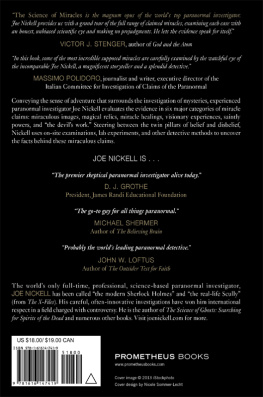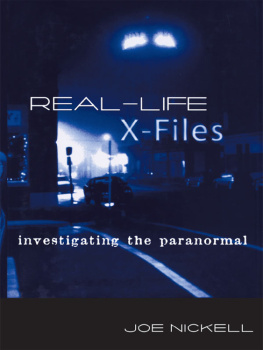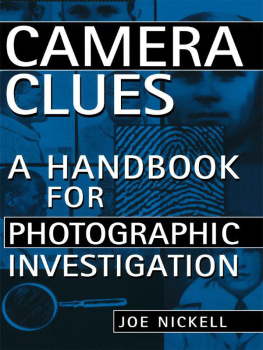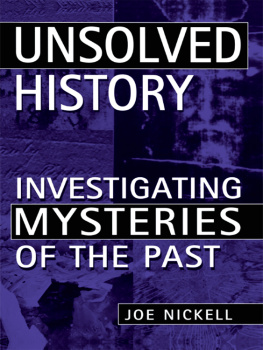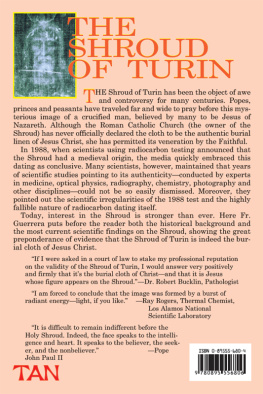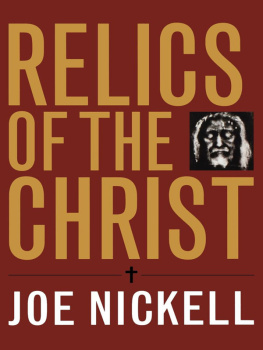
I am grateful to the numerous people who helped to make this book possible.
Paul Kurtz (19252012), chairman and founder of Prometheus Books, believed in this project, and the skilled staff members at Prometheus were again a pleasure to work with, including Steven L. Mitchell, Cate Roberts-Abel, Brian McMahon, Jade Zora Scibilia, Melissa Shofner, and Nicole Sommer-Lecht.
At the Center for Inquiry I am grateful to Timothy Binga, director of the Center for Inquiry Libraries, for research assistance, aided by Librarian Lisa Nolan; Paul E. Loynes for typesetting; Thomas Flynn for photographic expertise and other advice; my assistant, Ed Beck, for many efforts, including scanning and organizing illustrations; and indeed the entire CFI staff for help at all levelsespecially Ronald A. Lindsay, president and CEO; Barry Karr, executive director of CFI's Committee for Skeptical Inquiry; Kendrick Frazier, editor of Skeptical Inquirer (CFI's science magazine); and Patricia Beauchamp, Chris Fix, Julia Lavarnway, and many others.
I especially want to thank John and Mary Frantz for their generous financial assistance, which helped make many of my investigations possible.
I am also grateful to my wife Diana Harris for her assistance, and the support of my daughter, Cherie Roycroft, and grandchildren Chase, Tyner, and Alexis Jo.
In addition to those mentioned in the text, I am also indebted to the many scholars, scientists, popular writers, and other generous folk who assisted me at numerous sites around the world over the many years of this investigative effort. To all I am most appreciative.

Effigies that worked apparent miracles were reported in ancient cultures. The operative word here is apparent. What can we learn about wonderworking idols that credulous folk of yore did not know? We begin with the sensational mystery of a Babylonian figure worshipped for its demonstrable appetite!
THE IDOL OF BEL
During the reign of Cyrus, the Babylonians persuaded the Persian king to worship their idol Bel (or Baal), which was set up in a temple. Each day the priests placed before the figure twelve bushels of flour, forty sheep, and fifty gallons of wine (). Then the temple doors would be closed. Yet when the doors were opened in the morning, the entire meal would have been devoured!
These events are told in relation to the Old Testament prophet Daniel, who, encountering the priests, soon uncovered the secret of the devouring, imbibing idol. The story is found in chapter fourteen of the Book of Daniel (in Catholic Bibles, Daniel 14:121).
Daniel, a wise counselor to Cyrus, advised him on many matters, but the king demanded to know why Daniel refused to worship the deity. Daniel responded by stating that he believed in a living God. Cyrus pressed him further: Was not Bel a living God? Did Daniel not see how much the effigy ate and drank each day? Daniel, laughing, cautioned the king not to be deceived. He observed that the idol was merely a brass-over-clay statue and therefore incapable of eating or drinking anything.
SECRET REVEALED
For this perceived blasphemy, King Cyrus grew angry. Summoning the seventy priests of Bel, he proposed a test between them and Daniel. The loseror loserswould be put to death. And so Cyrus ordered the food and wine to be placed before the statue once again, but this time the temple doors were not just closed; they were sealed as well. This way, no one could gain entry without revealing the fact.
The following morning the seals were unbroken, yet the food was gone. However, Daniel had set a trap to reveal possible trickery. According to the account, he had instructed his servants to scatter ashes upon the floor of the temple before it was sealed. When the doors were opened, Daniel restrained the king from entering the temple and called attention to the unmistakable footprintsof men, women, and childrenpreserved in the ashes.
Thereupon, the priests confessed. They revealed the secret doors by which they and their families had entered and partaken of the daily feast. Although the legend is not known to have a historical basis, it no doubt helped motivate the Jews to resist idolatry. We can also appreciate it as a model of critical thinkingespecially one among the earliest reports of paranormal investigation.
FIRE FROM HEAVEN
Another magical feat is associated with Bel (or Baal), although it does not directly involve an idol; this time, however, the deity is trumped by an apparent miracle from God. This story, which is related in 1 Kings (18:1939), features a sort of duel between the prophet Elijah and 450 priests of Baal. Each side is to invoke his deity in an attempt to receive, as a sign, fire from Heaven.
After the priests fail, Elijah builds an altar of twelve stones surrounded by a trench, places on it wood and pieces of a sacrificial bull, and then (as if to make the test more difficult?) drenches the whole with four jars of water, repeated two more times. Finally, Elijah invokes the Lord: Then the fire of the Lord fell, and consumed the burnt sacrifice, and the wood, and the stones, and the dust, and licked up the water that was in the trench (1 Kings 18:38).
However, a clue as to what could have occurred (if such an event actually happened) is found in a similar account, recorded in 2 Maccabees 1:1936 (Catholic Bibles). In this account a thick liquid is described rather than water, and it is called nephthar (similar to naphtha)obviously a flammable petroleum product.
How the liquid could have been ignited is suggested in the account (1:22) that tells how at first the sun was clouded over. Then, when the sun finally shone, the fire blazed forth and everyone marveled. This could be consistent with a small, concave condensing mirror, or possibly a burning glass, having been secreted among the petroleum-drenched sticks of wood to trigger the fire when the sun's rays were focused on it.
Of course this incident might never actually have happened. When I researched it many years ago, one scientist cautioned that the Maccabean account was apparently written about a century after the events it describes and so may have been little more than a pious legend (Stavroudis 1979). The same may be said of the version involving Elijah, as well as of many other such miracle tales.
OTHER TEMPLE IDOLS
Additional stories of ancient wonderworkingin Greek and Roman templessurvive. The great mathematician, engineer, and inventor Hero of Alexandria provided some detailed evidence in his treatise The Pneumatics (ca. 62 CE).
Complete with schematic drawings, Hero describes the mechanistic works of some of his predecessors as well as his own modifications and original inventions. Hydraulics and pneumatics, along with concealed tubing, effected the mechanical miracles.
For example, Hero mentions an ingenious idol used by the ancient Egyptians, described as Libations on an Altar produced by Fire. The altar was a heavy pedestal upon which stood the idol, the statue of a goddess holding a vase. When a fire was built upon the altar, presently the figure wouldseemingly miraculouslypour out the customary libations upon it. Hero explained that under the fire bowl was an airtight chamber, the air of which expanded as it was heated. This forced the wine from a hidden reservoir up a tube inside the figure and out the vase. As the wine extinguished the fire, the flow stopped (Gibson 1967, 2122).
Next page
